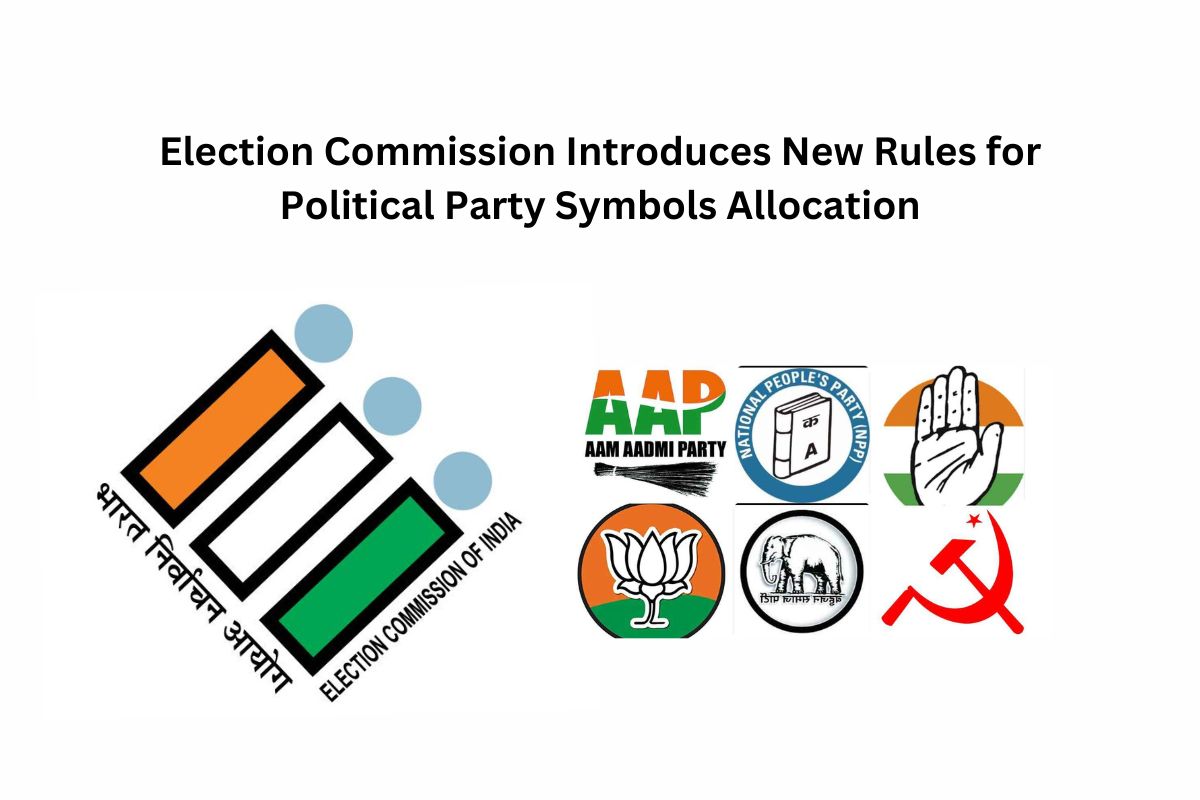
As a part of latest current affairs, the Election Commission has introduced amendments to the rules governing the allocation of symbols for new political parties. These changes, set to take effect from January 11, primarily target registered unorganized political parties (RUPP), aiming to enhance transparency in the electoral process.
Revised Rules for RUPPs:
Under the updated guidelines, RUPPs face new requirements when applying for symbols. These include the submission of audited accounts for the last three years, an expenditure statement from the last two elections, and the signature of the authorized office bearer. This step aims to bring accountability to the allocation of symbols.
Understanding RUPPs:
The term “Registered Unorganized Political Parties (RUPP)” refers to registered parties lacking a well-defined organizational structure. The Election Commission’s decision to set specific criteria for these parties demonstrates a commitment to organizing the political landscape.
Criteria for State/National Party Status:
To attain state or national party status, political entities must meet specific criteria outlined by the Election Commission. This includes securing a minimum percentage of votes and obtaining a certain number of seats in legislative bodies. Stringent criteria ensure that only parties with substantial public support and representation achieve this status.
Impact on Electoral Process:
The new rules regarding symbol allocation are poised to enhance the electoral process by fostering transparency, accountability, and a more organized political environment. As the implementation date approaches, political parties will need to comply with these guidelines to secure symbols for representation on the ballot.
Empowered Election Commission:
Article 324 grants significant authority to the Election Commission in overseeing the electoral process. The article outlines the removal procedure for the Chief Election Commissioner, underscoring the commission’s crucial role in maintaining the integrity of the electoral system.
Removal Process Of The Chief Election Commissioner:
In the Indian Constitution, the removal process of the Chief Election Commissioner is distinct and follows specific procedures to ensure fairness and independence. The Chief Election Commissioner (CEC) heads the Election Commission of India and plays a pivotal role in overseeing the electoral processes. The removal process is outlined in Article 324 of the Indian Constitution.
A resolution for the removal of the Chief Election Commissioner must be passed by a special majority in each house of Parliament. A special majority implies a majority of the total membership of the house and a majority of not less than two-thirds of the members present and voting.
The removal process is initiated by presenting specific charges against the Chief Election Commissioner. These charges can include acts of misconduct or incapacity. Prior to the resolution, an inquiry may be conducted to examine the validity of the charges.
If both houses of Parliament pass the resolution for removal, it is presented to the President of India for approval. The President may then issue a formal order of removal.
Important Questions For Exams
- What changes has the Election Commission introduced regarding the allocation of symbols for new political parties?
- When will the revised rules for political party symbols allocation come into effect?
- What specific documents are registered unorganized political parties (RUPPs) required to submit along with their application for new symbols?
- Under which article is the Election Commission empowered, and what role does it play in overseeing the electoral process?
- Explain the term “Registered Unorganized Political Parties (RUPP)” and why the Election Commission has introduced specific criteria for them.
- What is the significance of the Chief Election Commissioner’s removal procedure outlined in Article 324?
- How do the new rules for symbol allocation contribute to enhancing transparency and accountability in the electoral process?
- Discuss the potential impact of the Election Commission’s decision on the organizational structure of political parties.


